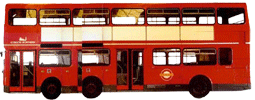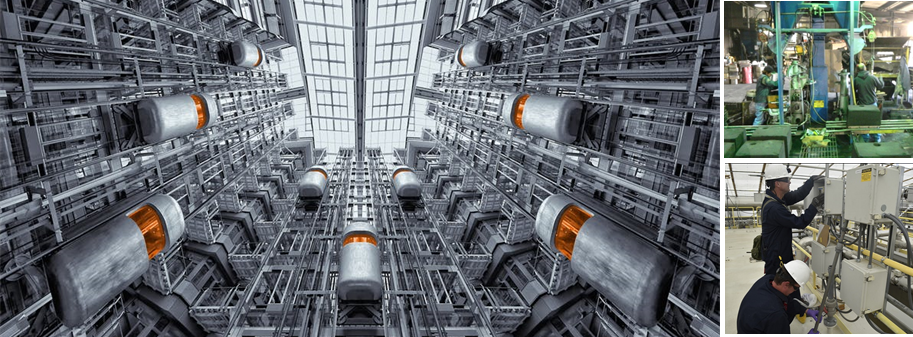
INTRODUCTION
We are introducing ourself as an Examining Body conducting common Professional Diploma Examination in Automobile Engineering for the working professionals in India through different major city centres.
This professional organisation was established in 1969. It was registered under Societies Act 1860 with seven Governing council members in 1975. After the Tamil Nadu Govt. regulated their own Societies Act, this organisation was registered again under Tamil Nadu Government Societies Act 1975 during the year 1985. From the year 1996 to 2001 our Examining Body was recognised by Continuing Education Programme of AICTE as an Examining body to conduct examination in the area of Engineering to their all AICTE-CEP approved Training centers. After June 2001, the CEP programme was withdrawn by AICTE-New Delhi.
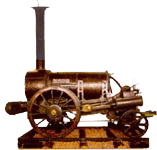 Concept:
Motor Industry is fast developing in India and providing employment to several
thousands of our youth. Many of these Industries have their own implant training
facilities. In addition there are several private technical institutes at many
places imparting training in Automobile engineering and awarding their own
certificates or Diplomas which due to the localised nature of the examination
may not attain sufficient stature to get Government recognition.
Concept:
Motor Industry is fast developing in India and providing employment to several
thousands of our youth. Many of these Industries have their own implant training
facilities. In addition there are several private technical institutes at many
places imparting training in Automobile engineering and awarding their own
certificates or Diplomas which due to the localised nature of the examination
may not attain sufficient stature to get Government recognition.
But there is hardly any common All India level Examination of the Diploma standard in Automobile Engineering at present where those Working professionals in this particular field as private candidates can qualify themselves. Many of them therefore go in for the examinations conducted by some foreign organisations.
 No
doubt some of these examinations are internationally well known, though not
officially recognised in India, but Indian students are faced with some serious
drawbacks for passing these examinations in view of the under mentioned
difficulties and many become disappointed.
No
doubt some of these examinations are internationally well known, though not
officially recognised in India, but Indian students are faced with some serious
drawbacks for passing these examinations in view of the under mentioned
difficulties and many become disappointed.
The main difficulties are:
1. Since the answer books are valued in foreign countries a fairly good
standard of English
![]() is
necessary. In view of the secondary place given for the study of English in the
present day Educational system, students find it difficult to express themselves
in correct English, although they may have good knowledge of the subject.
is
necessary. In view of the secondary place given for the study of English in the
present day Educational system, students find it difficult to express themselves
in correct English, although they may have good knowledge of the subject.
![]() 2.
Difficulties to go through all the formalities required such as getting
supporters etc.
2.
Difficulties to go through all the formalities required such as getting
supporters etc.
3. Difficulties to get foreign exchange required for Registration fees, Examination fees etc.
4. The Systems, laws etc., governing Motor Industry included in the syllabus
of these Examination are based on the practice followed by those foreign
countries concerned which
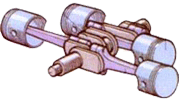 are
not always same as followed in this country. Hence apart from the difficulty in
getting proper coaching on the practice followed in those countries the student
may get confused.
are
not always same as followed in this country. Hence apart from the difficulty in
getting proper coaching on the practice followed in those countries the student
may get confused.
Some of the foreign organisation exploiting this prevailing situation and
misguiding the aspirants who intend to get foreign certificates by appointing
their own agents in India.
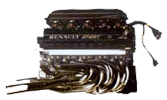 These
agents coaching the students through their agents institution according to their
own syllabus ( some of them not even coaching as there is no infrastructure
facilities) and conducting their own examination in India and awarding foreign
certificate by collecting huge amount from the students.
These
agents coaching the students through their agents institution according to their
own syllabus ( some of them not even coaching as there is no infrastructure
facilities) and conducting their own examination in India and awarding foreign
certificate by collecting huge amount from the students.
To obtain the foreign certificate these agents paying heavy foreign exchange
to the foreign Organisation. Even though these Foreign certificates are not
recognised in India, as there is
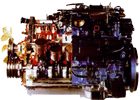 no
access for the working Professionals to get recognised and identifiable
certificate, they are going after these Foreign certificates to maintain their
status by spending huge amount which is not identified their standard. Besides
from the National points of view, there is a heavy drain on our hard pressed
foreign Exchange.
no
access for the working Professionals to get recognised and identifiable
certificate, they are going after these Foreign certificates to maintain their
status by spending huge amount which is not identified their standard. Besides
from the National points of view, there is a heavy drain on our hard pressed
foreign Exchange.
Another drawback is that those who pass those examinations are isolated in a
vast country like India so that no Professional Organisation can be effectively
organised by those persons to help and guide them in their professional career.
Particularly some states in
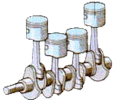 North
India, North west and North east India have very few Govt. recognised
Engineering Colleges and Polytechnics to promote technical Education. Many
Engineering aspirant students to venture their study in diploma and degree in
Engineering course are coming to South India which has number of private Govt.
recognised Engineering Colleges and Polytechnics (Nowadays the Education become
business in these States) to fulfill their ambitious by spending huge amount of
their parents hard earned money. Many aspirants in those states could not do the
same due to their economic condition. They are all left out in the society
North
India, North west and North east India have very few Govt. recognised
Engineering Colleges and Polytechnics to promote technical Education. Many
Engineering aspirant students to venture their study in diploma and degree in
Engineering course are coming to South India which has number of private Govt.
recognised Engineering Colleges and Polytechnics (Nowadays the Education become
business in these States) to fulfill their ambitious by spending huge amount of
their parents hard earned money. Many aspirants in those states could not do the
same due to their economic condition. They are all left out in the society
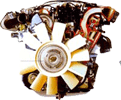 without
fulfilling their ambition though they have full potential of knowledge and aim.
To reach the technical Education even to the remote places in India for these
deprived persons, the common examination by framing standard syllabus is highly
necessary. The need for developing an All India level Examination on the
Diploma standard in Automobile Engineering was keenly felt and A.M.I.M.I.
(India) is the result.
without
fulfilling their ambition though they have full potential of knowledge and aim.
To reach the technical Education even to the remote places in India for these
deprived persons, the common examination by framing standard syllabus is highly
necessary. The need for developing an All India level Examination on the
Diploma standard in Automobile Engineering was keenly felt and A.M.I.M.I.
(India) is the result.
AIM: The pattern introduced is providing Engineering Education at a diploma level. The professional diploma examination is termed as Associate member of "Institute of Motor Industry (India)" ie. AMIMI(I).
 These
supplementary Industries, which too are continuously upgrading themselves
technologically, vary from air conditioners to car stereos to number plates are
Letter etchings. Another important set of industries linked with the automobile
are bearings range of chemicals, greases, additives and sealants that keep the
various part of the machine functioning smoothly, prolong the life of the
vehicle or increase its fuel efficiency.
These
supplementary Industries, which too are continuously upgrading themselves
technologically, vary from air conditioners to car stereos to number plates are
Letter etchings. Another important set of industries linked with the automobile
are bearings range of chemicals, greases, additives and sealants that keep the
various part of the machine functioning smoothly, prolong the life of the
vehicle or increase its fuel efficiency.
Of course, machinery for making auto components themselves constitute an
industry. Seating systems, foams and machinery or handling material such as
leather used for seat cushions are another connected industry. Then there are a
whole range of hand tools of
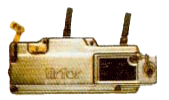 differing
sizes and precision that are used either in the automobile assembly plants
(which, however, are getting increasingly automatised or even robotised) or
wielded by thousands of mechanics servicing operating vehicles, besides being
offered to buyers of vehicles in a small kit. Relatively new arrivals in the
Indian scene linked to automobiles include automatic garage doors and safety
equipment.
differing
sizes and precision that are used either in the automobile assembly plants
(which, however, are getting increasingly automatised or even robotised) or
wielded by thousands of mechanics servicing operating vehicles, besides being
offered to buyers of vehicles in a small kit. Relatively new arrivals in the
Indian scene linked to automobiles include automatic garage doors and safety
equipment.
The convertors, that are meant to combat pollution and also raise the fuel
efficiency of vehicles, including two wheelers and cars, running on leaded
petrol, as distinct from
![]() Catalytic
convertors that are part of any new car which is run on unleaded petrol. These
Convertors, based on MASER (microwave amplification through stimulated emission
Radiation) technology, use base metals and hence are said to be highly
cost-effective.
Catalytic
convertors that are part of any new car which is run on unleaded petrol. These
Convertors, based on MASER (microwave amplification through stimulated emission
Radiation) technology, use base metals and hence are said to be highly
cost-effective.
The ubiquitous computers are of course there, assisting in testing of part and components or in designing automobiles and its various internal structures. Last, but not the least, are financiers, and of course, information systems, including journals and internet sites, that focus on the automobile.
No wonder States and Nations vie with each other to attract global automobile major as a strategy of employment generation and wealth creation.
This Associate membership examination will be regarded as a qualification for
a technician who is qualified by specialist technical education to work under
the general direction of
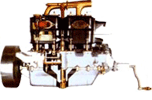 technologist
who shall be a "Charter Engineering". The working professional who are passing
the Associate Membership examination of this Institute are normally engaged in
manufacture, service and maintenance of Automobiles, garaging equipments and
systems at the designed performance level filling subordinate posts in private
sector, central and State Government services.
technologist
who shall be a "Charter Engineering". The working professional who are passing
the Associate Membership examination of this Institute are normally engaged in
manufacture, service and maintenance of Automobiles, garaging equipments and
systems at the designed performance level filling subordinate posts in private
sector, central and State Government services.
![]() The
Society intend to expand its activities in addition to the examination in the
way of conducting meeting and conference to create awareness and remedy on the
present day problems, such as pollution control, traffic rules and development,
Road Safety and other related matters in collaboration with Major Automobile
Industries, Govt. sector and some International Organisation who are in the
Automobile field by developing their contact through website. As first step the
society circulating regular Bulletin to all their members. Through bulletin it
furnishes all the details latest development and Invention in the Automobile
Industry.
The
Society intend to expand its activities in addition to the examination in the
way of conducting meeting and conference to create awareness and remedy on the
present day problems, such as pollution control, traffic rules and development,
Road Safety and other related matters in collaboration with Major Automobile
Industries, Govt. sector and some International Organisation who are in the
Automobile field by developing their contact through website. As first step the
society circulating regular Bulletin to all their members. Through bulletin it
furnishes all the details latest development and Invention in the Automobile
Industry.
Concept: Importance of AUTOMOBILE field: Accelerator of job generation
Any automobile-be it a car, a truck or a two-wheeler is obviously a mere assemblage of hundreds of parts and components that ultimately impart to it the quality of locomotion.
These components, varying from the engine to fastners (nuts and bolts of
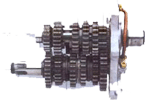 various
sizes) are behind the huge employment, especially in the medium and small
sectors, that the automobile industry create, not to mention thousands more by
way of service centers and mechanic workshops. Industries, both domestic and
foreign, such as special grade steel, paints and tyres, castings and forgings
are increasingly even plastics, are major suppliers of auto plants and component
units.
various
sizes) are behind the huge employment, especially in the medium and small
sectors, that the automobile industry create, not to mention thousands more by
way of service centers and mechanic workshops. Industries, both domestic and
foreign, such as special grade steel, paints and tyres, castings and forgings
are increasingly even plastics, are major suppliers of auto plants and component
units.
But the fact that a plethora of other industries, not immediately connected with the Technology of locomotion also thrive either fully or partly, on making supplies to the Automotive industry is obvious from a glance.
As stated above, the Motor Industry is fast developing in India providing employment to several thousand of our youth. The working professional involved in these Automobile and its allied trade industries, though they have much knowledge in practical, they have less opportunities to qualify themselves in theory subjects.
Some of the major players in the Automobile sectors are Daewoo Motors, Hindustan Motors, Maruti, Mahindra and Mahindra, Bajaj Tempo, Hero Group, Eicher group are developing new models. Indian Oil, Exide, Mercedes Benz, TI Group, Fenner, Lucas India, TVS, Castrol, Atlas Copco, Pennzoil, Schon and Sandt Ag, Ceat, Kirloskar Pneumatic, Ramon and Demm, Philips India, Manatic Sales, Union Motors, Birlas, Hindustan Petroleum, Pentafour, are others in India.
Some of the ancillary products in the automobile sector other than its accelories are Lubricant products, shock absorbers, exhaust systems and struts, Corning, ceramic catalytic convertor substrator, diesel filters and small engine convertor, press, body and Paint shops, electronic fuel pumps, medium induction melting and heating system, Compressors and related products.
HISTORY OF AUTOMOBILE INDUSTRY
Though America did not invent the car, it soon dominated the industry
worldwide.
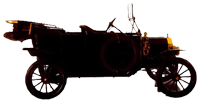 Innovators
like Henry Ford developed the first assembly line car production system in 1903,
and in 1908 his famous Model T became the first affordable car for millions.
Innovators
like Henry Ford developed the first assembly line car production system in 1903,
and in 1908 his famous Model T became the first affordable car for millions.
Few are aware that American cars also had a great impact on India and that an
enterprising American had introduced India's first fleet of 50 taxis in Bombay
way back in 1930.
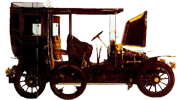 Before
World War II, cars had mainly been the playthings of the Maharajas who preferred
the elegant vehicles of Britain and Europe to the practical cars of America.
Before
World War II, cars had mainly been the playthings of the Maharajas who preferred
the elegant vehicles of Britain and Europe to the practical cars of America.
India's first car assembly plant was, however, set up by General Motors
 in
Bombay in 1943. It initially produced cars for the war efforts and their big
Chevrolets were to soon become the best known cars of time. Ford followed soon
after, but both found India's new industrial policies unacceptable and closed
shop in 1949. In the 1950's Premier Automobiles produced Dodge cars and trucks
for a few years.
in
Bombay in 1943. It initially produced cars for the war efforts and their big
Chevrolets were to soon become the best known cars of time. Ford followed soon
after, but both found India's new industrial policies unacceptable and closed
shop in 1949. In the 1950's Premier Automobiles produced Dodge cars and trucks
for a few years.
The next 25 years till 1984 were a Dark Age for the Indian car, and Hindustan Motors, Premier Automobiles, Standard Motors and Kaiser Corporation produced boring and unreliable Indian versions of the Morris, Fiat and Standard cars and Willys Jeeps.
The Government, inspired by visions of Gandhian simplicity and socialist egalitarianism, considered the car a plaything of a slite, crippled it with restrictions and taxes and deprived the country of an industry now recognised as one of the greatest engines for Economic and employment growth.
During these years, America, however, remained one of the major sources of
engineering and auto technologies and many US companies went into joint
 ventures
with Indian companies to produce a wide range of automotive components like
shock absorbers, gaskets, pistons, brake systems, tyres etc. Goodyear set up
India's first tyre plant in Calcutta in 1920. Firestone followed a few years
later. Tractors from international Harvester and Ford also made their marks.
ventures
with Indian companies to produce a wide range of automotive components like
shock absorbers, gaskets, pistons, brake systems, tyres etc. Goodyear set up
India's first tyre plant in Calcutta in 1920. Firestone followed a few years
later. Tractors from international Harvester and Ford also made their marks.
In the early 1980's things began to change. Sanjay Gandhi loved cars and spurred the dream of the people's car for India. Japanese vehicles then stormed the market. Suzuki revolutionized Indian cars with its little Maruti 800 that was India's first modern car.
It set new standards of convenience, reliability and fuel economy.
Motorcycles from Honda, Suzuki, Yamaha and Kawasaki then stirred the
 two-wheeler
market and light trucks for Nissan, Toyota and Mitsubishi reshaped the light
transport sector.
two-wheeler
market and light trucks for Nissan, Toyota and Mitsubishi reshaped the light
transport sector.
Suzuki's partnership with the Maruti, a public sector company, also resulted in customer credit becoming available for the first time from nationalized banks and several credit agencies. American banks like Citibank and Bank of America soon took the lead and defined procedures that the industry was to follow.
This belated hire/purchase facility contributed to a large expansion of market potential as Indian buyers could for the first time buy against their future incomes instead of having a rely on their meager savings alone.
The market began to stir and many US, European and Japanese companies began studying India's market potential. A study team from Ford concluded that the over taxed Indian citizen was a poor customer without access to any bank or private finance. The study concluded that, as the Government or companies bought most new cars, there was no market to small cars but some potential for big ones.
The reform process that began in 1991 soon saw an invasion of potential investors from almost every automaker seriously examining the Indian market.
Beyond Automotives
World vehicle production is expected to exceed 1.5 billion units by 2015. This is Equivalent to the total number of vehicles produced in the history of the motor industry.
To cope with the huge rise in vehicle population, the existing production units will have to be expanded and updated. At present, more than 1.4 billion tonnes of steel, metals, glass, rubber and plastics are on the world's roads, all of which will be scrapped or recycled over the next 16 years.
In 1995, the US, Japan and Germany alone accounted for 50 percent of all vehicle sales and ownership, whereas 74 per cent of global demand is in the developing nations, according to an export study.
The Indian Automotive Industry has been growing at an impressive rate of 50 percent in the last few years. The economic liberalisation has fuelled this market substantially, and the current concern of the automotive industry is to sustain this pace of growth.
Many new vehicles have successfully entered the Indian market and, with the increase in income levels of individuals, there is a possibility of a substantial rise in demand for luxury cars.
Fierce Competition
The Indian automotive industry has by now emerged as one of the most vibrant
sectors of the economy. Competition has intensified with the setting up of
several joint ventures. Many new cars manufacturers in India have been introduced in the market, and more are expected to join the hand shortly. An
interesting development competition in the industry is the emergence of
segmentation, particularly in the passenger car sector, which is currently
witnessing greater influx of leading players, with the entry of General Motors,
Peugeot, Fiat, Ford Motors, Suzuki, Hyundai and others. The middle segment is
the focus of increased attention.
introduced in the market, and more are expected to join the hand shortly. An
interesting development competition in the industry is the emergence of
segmentation, particularly in the passenger car sector, which is currently
witnessing greater influx of leading players, with the entry of General Motors,
Peugeot, Fiat, Ford Motors, Suzuki, Hyundai and others. The middle segment is
the focus of increased attention.
Heavy vehicles segment: In the commercial vehicles segment, the shift is towards Medium, heavy and specialised vehicles e.g. those manufacturers for courier and catering services. Segmentation can also be attribute to growth in consumer goods markets which dictates preference for certain type of vehicles.
On the export front, the industry recorded a Fifteen percent growth in 2003-04 over that of 2002-03 Passenger cars registered a 35 percent growth in the first quarter over the corresponding period in the previous financial year.
The market potential in India is enormous, that at the current and projected rates of production, India will be in a position to produce and sell 8 to 9 Lakhs cars alone by 2006 A.D. This explains why auto giants like Renault, Valvo, Toyota, and Dahatsu are ready to enter the Indian scene with their massive investment plans. The ancillaries and accessories segment too remains active and kicking, as evident in the investment proposals formulated by International specialist. Reports have it that Korean, Japanese, and American auto components and auto accessories manufacturers have got their plans ready to pump in investments worth Rs. 2800 crores at the Irungattukottai Industrial park developed by SIPCOT near Chennai.
Small car era in India: A small family car fit for the middle and
lower middle class. The Automobile giants-Telco, Hyundai and Daewoo-have already
started their small
 car
production. The Hyundai's production and Sales reached more than 1,00,000 in the
shorter period. While Telco's Mint and Daewoo Matiz already hit the Indian
roads. All the three companies are confident enough of successfully marketing
their respective vehicles in a market that is sure to hot op in the coming and
later years.
car
production. The Hyundai's production and Sales reached more than 1,00,000 in the
shorter period. While Telco's Mint and Daewoo Matiz already hit the Indian
roads. All the three companies are confident enough of successfully marketing
their respective vehicles in a market that is sure to hot op in the coming and
later years.
Industry Commitment
Thus the automotive sector is geared to meet expectations and a commitment for the future, aiming at seven per cent plus growth in GDP, and has directed its efforts towards industrialisation, technology upgradation, employment generation, safety enhancement and greater customer satisfaction.
Installed capacities in Indian Automobile Industry
Industry experts aware that Asia will develop into the world's biggest automobile Market by 2005 with annual sales of 10 million vehicles. In India alone, the demand for Automobile will rise from 400,000 to about 1.5 million vehicles by 2001.
I. Vehicles having four or more wheels such as light, medium and heavy vehicles multi-utility vehicles and passenger cars.
